Last Updated: 07/05/2025
Muzzle Training Your Dog
Every dog is likely to wear a muzzle at least once in their life. Take a read through our Vet-guide on how to positively train your dog to wear a muzzle.
Author: Dr Brittany Ward BVSc
Reading Time: 26 minutes - medium read
Many people assume that a dog wearing a muzzle must be aggressive. This is rarely the case! A dog muzzle is just a training tool, no different to a collar or harness. Every dog is likely to wear a muzzle at least once in their life, so every dog should be trained to wear a muzzle before they need to wear one. This makes any muzzle wearing situation more pleasant for you and your dog.
Why Should Dogs Wear A Muzzle
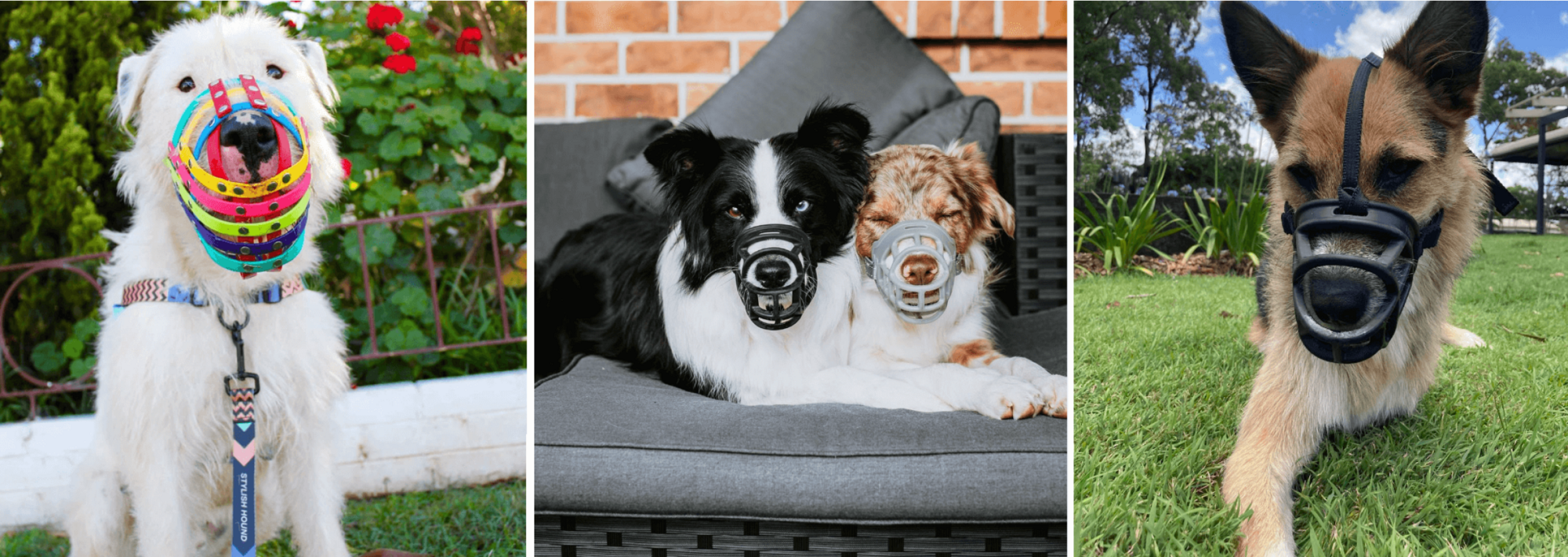
Photo credits: @deafdogodin and @theborkerboys
There are many reasons why a dog might wear a muzzle. A history of or risk of biting is definitely one reason, but there are many other more benign reasons why owners might choose to regularly use a muzzle. Muzzles are used to protect the dog, the owner and any other people around.
When To Use a Muzzle:

During an emergency - such as when wounded or frightened

Stressful situations - like a vet visit

During grooming sessions - especially for puppies still being desensitised to grooming procedures

To prevent picking things up from the ground - e.g. food or potential toxins

To prevent eating non-food items, especially those that could potentially cause obstruction

To prevent wildlife or small animal hunting

As an alternative to an e-collar or "cone of shame"

To prevent biting in a fearful dog during training

In a dog that has a history of biting
Choosing The Right Muzzle
There are a couple of different types of muzzles and you will need to decide which one best suits your dog, or you may need to train them to wear both. The two types of muzzle are:

Basket Muzzles: These tend to be more spacious to accommodate panting and have spaces to allow for eating and drinking. They are perfect for walks, around the house or when recovering from surgery and can be worn for longer periods of time.

Soft Muzzle: These muzzles hold the mouth closed, but have an opening at the end to allow for breathing. It should only be used for short periods of time, such as a nail clip or veterinary examination.
For most instances, the basket muzzle is recommended over a soft muzzle, especially for training purposes as the openings provide the opportunity to provide treat rewards to your dog.
Top Muzzle Recommendations
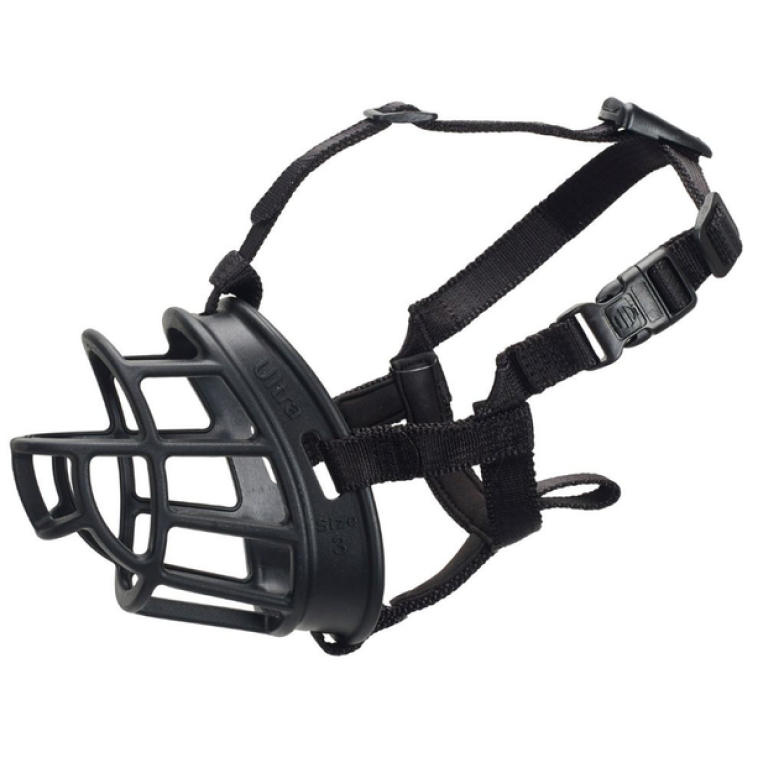
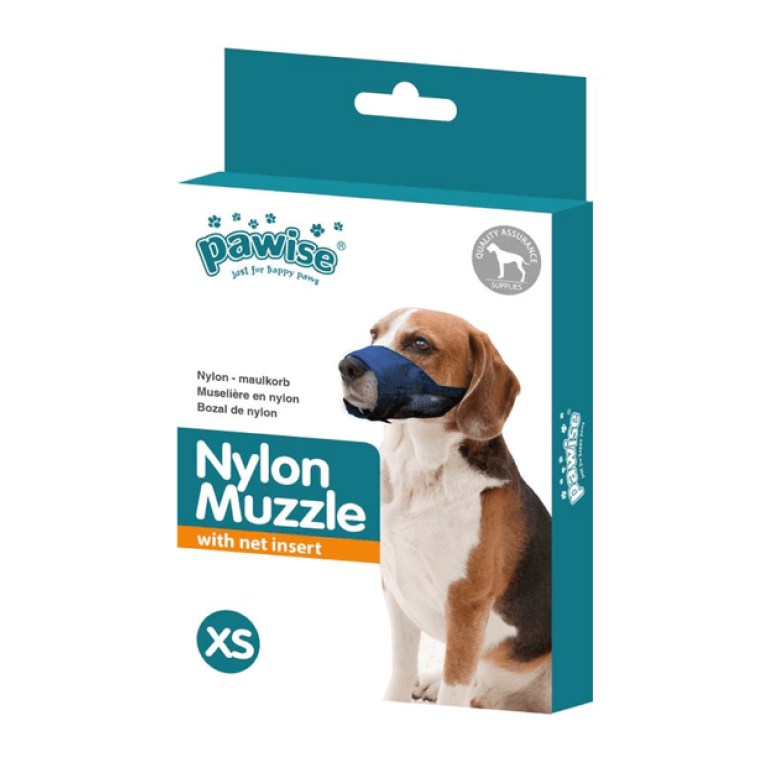
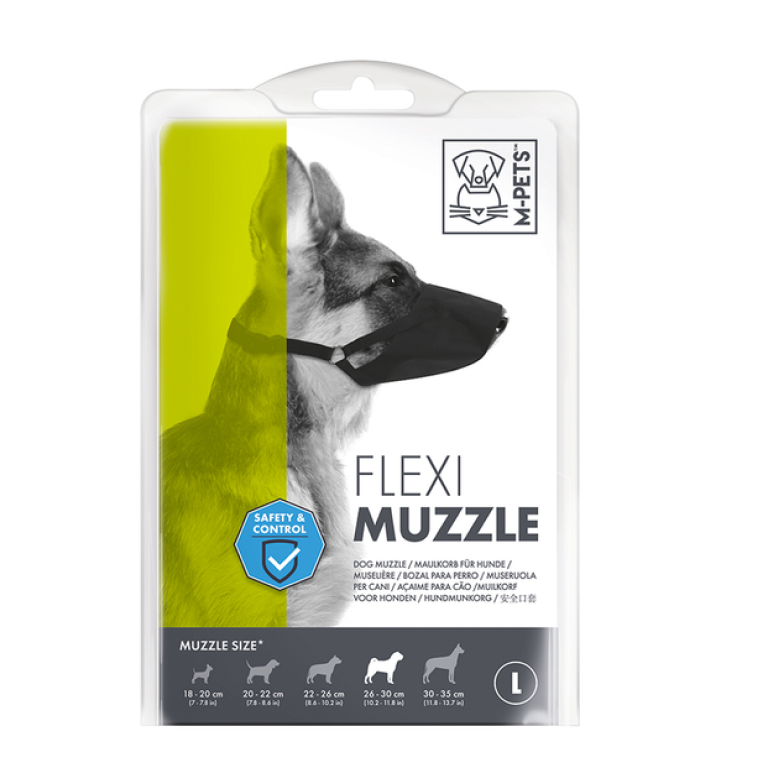
Sizing Your Muzzle
Different muzzles will have slightly different sizes and sizing guides, usually found on the back of the product or on the product website when purchasing. Most products will also have rough breed recommendations for each size as a starting point. To purchase a correctly fitting muzzle, three main measurements you will need to take - muzzle width, length and height.
The other factors to consider are how comfortably the muzzle sits, does it rub on your dog, does it allow for a regular or full pant, can your dog vomit/swallow without choking and if the muzzle slips off or not. Some muzzles are adjustable, but not all areas will be, so it is best to purchase a muzzle that fits your dog as best as possible. You may also need to purchase a couple of muzzles to suit different situations.
Ideally, a correctly fitted muzzle should sit:

1/2 Inch or 1.3cm away from the Eyes and end 1/4 Inch or 0.65cm past the Nose.

The chin length should not rub on the neck.

The width of the muzzle should be 1.3cm to 3.8cm wider than your dog's muzzle.

The cheek bars shouldn't rub on your dog's cheeks.

The muzzle should be taller than your dog's full pant by 1/2 Inch in Small Dogs, 3/4 Inch in Medium Dogs and 1 Inch in Large Dogs.
It is important that your dog is able to comfortably achieve full pant, as opposed to a regular pant. Full pant is the wide open mouthed pant your dog does commonly after exercise, play, in high stress situations or when in the heat. Inhibiting full pant could lead to Heatstroke. Check out our article Heatstroke in Pets for more information on prevention, signs and treatment of Heatstroke.
Training Your Dog To Wear A Muzzle
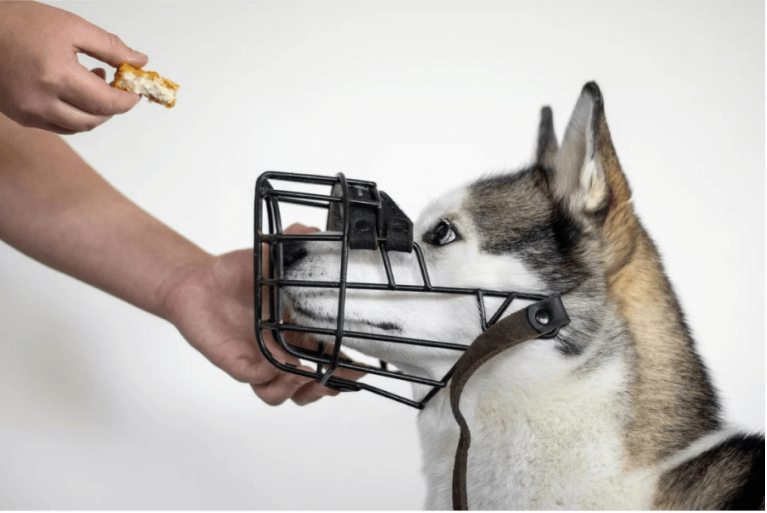
Photo credit: @dysfunctionalcanine
It is not normal for dogs to have something around their face or muzzle, so placing anything around here can be irritating - especially if it is restrictive. Just like collars and leads, your dog will need to be trained to wear a muzzle. A similar training technique can also be used for muzzle based training tools like a dog head harnesses.
1. Get Your Dog Used To The Muzzle
If your dog has no prior experience with a muzzle, then they won't know what it is or what it does. Introduce them to the muzzle. Let them sniff it, interact with it, nuzzle it. Every time they approach or interact with the muzzle in a calm manner reward them.
2. Teach Them To Put Their Head in the Muzzle
You want your dog to feel comfortable putting the muzzle on. So put treats inside the muzzle. For this, you can place the muzzle in the palm of your hand and hold treats accessible through the gaps in the muzzle. Alternatively, you can put a doggy paste treat, such as peanut butter, on the inside of the muzzle so that your dog has to put their head in to lick the paste off.
For some dogs, you may need to start with the treats at the opening of the muzzle and slowly move them further into the muzzle. You can also try using circled hands, empty and cleaned yoghurt containers or paper cups initially to get your dog used to the idea of putting their face into an enclosed space.
3. Increase The Duration
Once your dog is comfortable putting their face in the muzzle, you can increase the amount of time their face is in the muzzle before they get the treat. This way they get used to their face being in the muzzle for an extended period of time and it will still be a pleasant experience.
4. Introduce The Clips
As your dog becomes comfortable holding their face in the muzzle, you can start to introduce the idea that the muzzle will be fastened. Start by placing the clips together and releasing them. Repeat this until your dog is comfortable, then start clipping the buckle and releasing it again. You can slowly increase the amount of time the muzzle stays clipped on for, rewarding your dog for their calm behaviour while the muzzle is on and fastened.
Make sure you reward them before you remove the muzzle, otherwise they will associate the muzzle coming off with being a good thing.
5. Practise
If you only use the muzzle in stressful or unfamiliar situations, your dog will learn to build a negative association with the muzzle being worn. So practise at home when your dog is relaxing and during play or training sessions. As these are positive experiences that your dog enjoys, wearing a muzzle while doing them will further improve your dog's positive association with the muzzle. Once your dog is comfortable wearing the muzzle and not trying to take it off, they are generally considered muzzle trained, but keep practising to maintain the positive association with the muzzle.
6. Add A Command
You may choose to combine your muzzle training with a command. Once your dog is confident putting on the muzzle, you can introduce a command word to tell your dog to put their face in the muzzle. Something as simple as 'Muzzle' will work, and it is optional, but can make the process of putting a muzzle on smoother. (My dogs use the command word 'Snoot'!)
Top Recommended Treats For Muzzle Training

Further Reading
Want to read more? Check out our other articles:
Want to know more? Check out our Discover Page for more tips on keeping your pets happy and healthy.